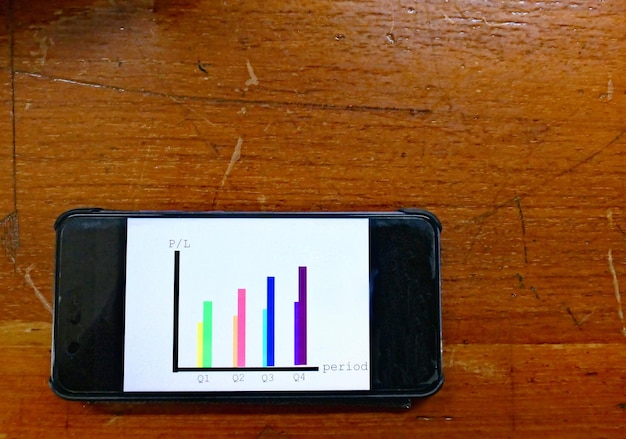Boost Your Credit Score: A 6-Month Guide to a 50-Point Increase

Improving your personal credit score by 50 points in 6 months involves strategic steps like consistently paying bills on time, reducing credit utilization, reviewing credit reports for errors, avoiding new credit applications, and diversifying credit types.
Want to know how to improve your personal credit score by 50 points in 6 months? It’s achievable with the right strategies. Let’s dive into the actionable steps you can take to boost your creditworthiness and unlock better financial opportunities.
Understand the Credit Score Landscape
Before diving into specific strategies, it’s essential to understand what a credit score is and why it matters. A credit score is a three-digit number that represents your creditworthiness. It’s used by lenders to assess the risk of lending you money. Improving your credit score can lead to lower interest rates, better loan terms, and increased financial opportunities.
Key Factors Influencing Your Credit Score
Several factors influence your credit score, each with varying degrees of importance. Understanding these factors can help you prioritize your efforts.
- Payment History: This is the most significant factor, accounting for about 35% of your score. Consistent on-time payments demonstrate responsible credit management.
- Credit Utilization: This refers to the amount of credit you’re using compared to your total available credit. Keeping this below 30% is ideal.
- Length of Credit History: A longer credit history generally leads to a better score, as it provides more data for lenders to evaluate.
- Credit Mix: Having a mix of different types of credit (e.g., credit cards, auto loans, mortgages) can positively impact your score.
- New Credit: Opening too many new accounts in a short period can lower your score, as it may indicate financial instability.

Knowing these factors is half the battle. Next, we’ll discuss actionable steps you can take to address each one, leading to a significant improvement in your credit score.
Step 1: Master On-Time Payments
Payment history is paramount. Making timely payments is the most impactful way to improve your credit score. Late payments can stay on your credit report for up to seven years, damaging your creditworthiness.
Set Up Payment Reminders
Life gets busy, and it’s easy to forget due dates. Setting up payment reminders can help ensure you never miss a payment.
- Automated Alerts: Most credit card companies and lenders offer email or text message reminders before your payment is due.
- Calendar Notifications: Use your phone or computer’s calendar to set up recurring reminders for each bill.
- Automatic Payments: Consider enrolling in automatic payments for your bills. This ensures timely payments and can save you the hassle of manual transfers.
Consolidate and Simplify
Managing multiple bills can be overwhelming. Consolidating and simplifying your payments can make it easier to stay on top of things.
By making on-time payments a priority, you’ll establish a solid foundation for improving your credit score. This simple yet crucial step can significantly boost your creditworthiness over time.
Step 2: Reduce Credit Utilization
Credit utilization, the amount of credit you’re using compared to your total available credit, is another key factor affecting your credit score. Keeping your credit utilization low demonstrates responsible credit management.
Calculate Your Credit Utilization Ratio
To effectively manage your credit utilization, you first need to know your current ratio. Here’s how to calculate it:
- Determine Your Total Available Credit: Add up the credit limits of all your credit cards.
- Determine Your Total Credit Balance: Add up the outstanding balances on all your credit cards.
- Calculate the Ratio: Divide your total credit balance by your total available credit. Multiply the result by 100 to get your credit utilization percentage.
Strategies to Lower Credit Utilization
Once you know your credit utilization ratio, you can take steps to lower it.
- Pay Down Balances: The most straightforward way to lower your credit utilization is to pay down your credit card balances. Focus on paying off the cards with the highest balances first.
- Request a Credit Limit Increase: Increasing your credit limit can lower your credit utilization ratio without requiring you to spend less. However, be sure to use the increased credit responsibly.
- Spread Out Purchases: Avoid making large purchases that will significantly increase your credit card balances. Try to spread out your purchases over time.

Managing your credit utilization is crucial for improving your credit score. By understanding your credit utilization ratio and implementing strategies to lower it, you can demonstrate responsible credit management and boost your creditworthiness.
Step 3: Review Your Credit Reports
Errors on your credit report can negatively impact your credit score. Regularly reviewing your credit reports can help you identify and correct inaccuracies.
Obtain Your Credit Reports
You’re entitled to a free credit report from each of the three major credit bureaus (Equifax, Experian, and TransUnion) every 12 months. You can access these reports at AnnualCreditReport.com.
Identify and Dispute Errors
Once you have your credit reports, review them carefully for any errors or inaccuracies.
- Incorrect Personal Information: Check for errors in your name, address, and Social Security number.
- Inaccurate Account Information: Verify that all accounts listed are yours and that the balances and payment histories are accurate.
- Duplicate Accounts: Look for any duplicate accounts that may be listed on your report.
Correcting errors on your credit report can lead to a quick boost in your credit score. By taking the time to review your reports and dispute any inaccuracies, you can ensure that your credit information is accurate and up-to-date.
Step 4: Avoid New Credit Applications
Opening too many new credit accounts in a short period can negatively impact your credit score. Each new application triggers a hard inquiry, which can lower your score. Furthermore, new accounts reduce your average account age, which can also have a negative effect.
Limit Credit Applications
Avoid applying for multiple credit cards or loans at the same time. Space out your applications to minimize the impact on your credit score.
Be Selective
Before applying for a new credit account, carefully consider whether you truly need it. Only apply for credit when you have a specific purpose in mind and are confident that you can manage the account responsibly.
By limiting your credit applications, you can minimize the negative impact on your credit score and focus on managing your existing accounts effectively.
Step 5: Diversify Credit Types
Having a mix of different types of credit can positively impact your credit score. Lenders like to see that you can responsibly manage various types of credit, such as credit cards, auto loans, mortgages, and student loans.
Consider a Credit-Builder Loan
If you have limited credit history, a credit-builder loan can be a good option. These loans are designed to help you build credit by making regular payments over a set period.
Add a Secured Credit Card
A secured credit card is another option for building credit. With a secured card, you provide a security deposit, which serves as your credit limit. As you make regular payments, you build your credit history.
Diversifying your credit types can demonstrate responsible credit management and lead to a higher credit score. By exploring different options and managing them responsibly, you can improve your creditworthiness over time.
Step 6: Be Patient and Consistent
Improving your credit score is a gradual process that requires patience and consistency. It takes time to build a positive credit history and demonstrate responsible credit management.
Stay the Course
Don’t get discouraged if you don’t see immediate results. Stick to your plan and continue to implement the strategies outlined in this guide. Over time, your efforts will pay off, and you’ll see a significant improvement in your credit score.
Monitor Your Progress
Regularly monitor your credit score to track your progress. This will help you stay motivated and identify any areas where you may need to adjust your strategy.
By being patient and consistent, you can achieve your goal of improving your credit score by 50 points in 6 months. Remember to stay focused, follow the strategies outlined in this guide, and monitor your progress along the way.
| Key Action | Brief Description |
|---|---|
| 🗓️ On-Time Payments | Always pay bills on time to boost payment history. |
| 💳 Lower Utilization | Keep credit card balances below 30% of the limit. |
| 🔎 Review Reports | Check credit reports for errors and dispute any inaccuracies. |
| 🔄 Diversify Credit | Use a mix of credit types for a better credit profile |
Frequently Asked Questions (FAQ)
▼
A good credit score typically ranges from 670 to 739, while a great credit score is between 740 and 799. Exceptional scores are 800 or higher.
▼
It’s advisable to check your credit report at least once a year, but ideally, every few months to monitor for any inaccuracies or signs of identity theft.
▼
Closing a credit card reduces your overall available credit, potentially increasing your credit utilization ratio, which can negatively impact your score. Only close if necessary.
▼
Improvements to your credit score can start to appear within a few months after implementing positive financial habits like on-time payments and debt reduction.
▼
Yes, paying off debt, especially credit card debt, reduces your credit utilization and can significantly improve your credit score over time.
Conclusion
Improving your credit score by 50 points in 6 months is a realistic goal with dedication and the right strategies. By prioritizing on-time payments, managing credit utilization, reviewing credit reports, and diversifying credit types, you can boost your creditworthiness and unlock better financial opportunities.





